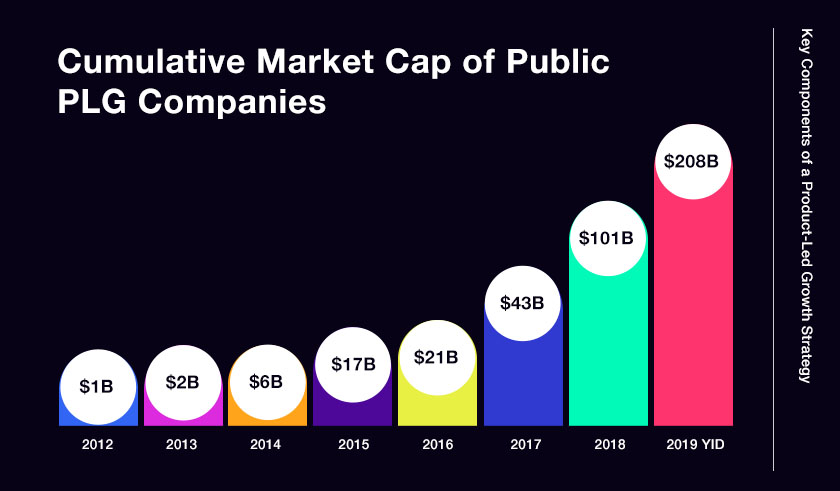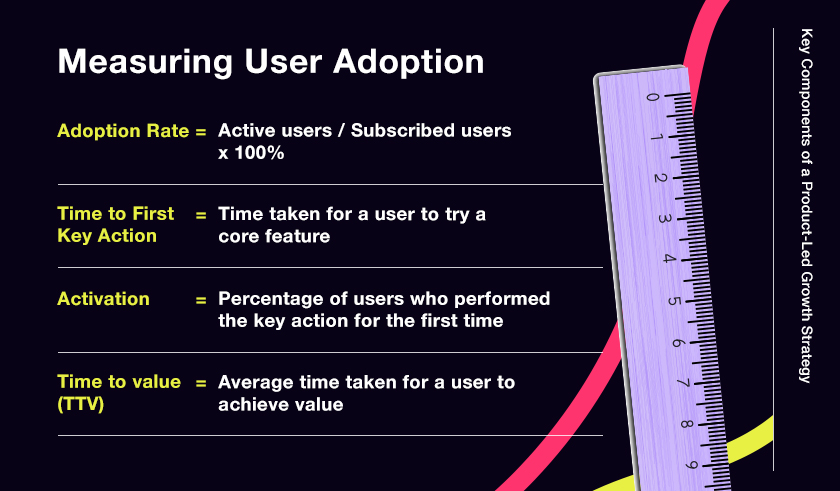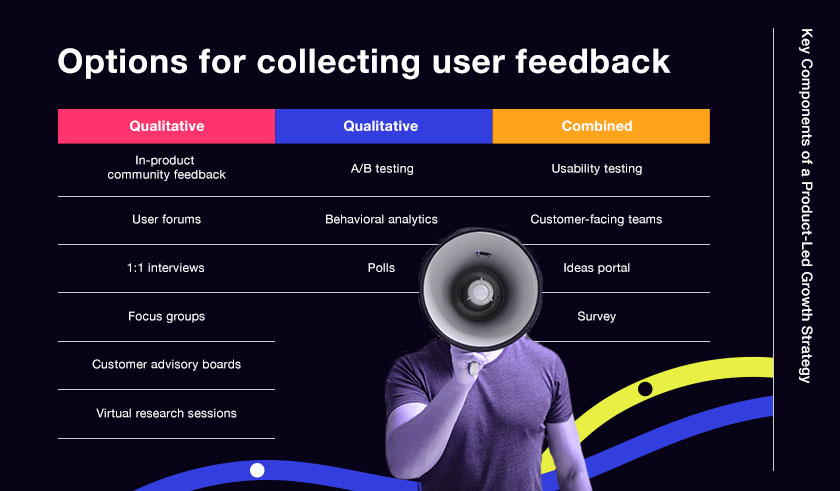
Key Components of a Product-Led Growth Strategy
The essential principles driving product-focused strategies at leading B2B SaaS companies.
Product-Led Growth: A Winning Strategy
As B2B SaaS companies strive to gain market share and beat competition in a tough market, many are turning to product-led growth (PLG) as a smarter, more cost-efficient way to drive acquisition, conversion, retention, and referral.
The concept is well proven, followed by leading technology platforms including Stripe, Slack, and Zoom. Publicly traded PLG companies are now valued at over $200 billion, with a 29.7% year-on-year growth rate, versus 16.8% for the wider SaaS market.

So, what are they doing differently? The approach can be defined as follows (Product-Led Growth Collective):
“Product-led growth (PLG) is a business methodology in which user acquisition, expansion, conversion, and retention are all driven primarily by the product itself. It creates company-wide alignment across teams—from engineering to sales and marketing—around the product as the largest source of sustainable, scalable business growth.”
Essentially, PLG is a highly customer-centered model that seeks to understand the user journey, needs, and frustrations, and continuously strives to align the product to these parameters. The outcome is that new customers grow into engaged users and advocates, driving growth via retention, increasing contract value and referrals.
This article takes a look at the key components of a PLG strategy. These principles are at the heart of the disruptive growth model that is delivering high-impact results.
Minimal Barriers and Friction
Providing quick, easy access to the product is an essential part of the PLG approach. Many SaaS platforms offer a time-limited free trial as a way to get prospective customers using the product as early as possible.
To make this happen smoothly, remove all friction from the sign-up process. For example, avoid asking for too much information up front, such as payment details or long-winded questions about intent or company characteristics. Unnecessary steps or features should be eliminated, in favor of streamlined onboarding.
Early Value Demonstration
Proving value quickly is the next important step. To avoid the problem of users signing up then failing to make full use of the product, deliver a positive, useful experience from the beginning. The greater their adoption, the more likely they will be to convert into customers at the end of the trial.
One way to achieve this is to set up an email sequence that will guide new users through a few essential tasks and help them achieve success quickly. What these are will depend on the purpose of the product. For example, if your product is a marketing automation it could guide them through setting up and launching their first campaign. As they start to see real opens and clicks, the impact of your product will be clear.

Feature-Driven Demand
For companies that prioritize PLG, it’s the internal features of the product, as well as customer usage, that drive success. They expand by offering the useful tools and capabilities that customers really want and need. This drives greater adoption, engagement, and referrals to build the user base.
Meeting and exceeding user expectations relies on a detailed understanding of the customer. Intelligent use of insights, direct feedback, and innovation will help you build a product that enables the customer to overcome their challenges and realize their goals.

Ease-of-Use and In-Built Virality
The user experience is an integral part of product marketing and PLG. Every interaction and interface between the product and the customer is an opportunity to help users achieve their goals with minimal effort. Carefully map and optimize the customer journey to identify and address friction points.
In-built virality means the product should organically encourage customers to share it and involve other users. Business communication platform Slack is an excellent example of both ease-of-use and in-built virality. The freemium model means that the basic product is free to use initially. It’s easy to set up and start chatting to colleagues and contacts. Inviting them to the workspace instantly widens the reach and adoption of the tool. As more people use it to communicate, discuss projects, and share information, more value is achieved, organically building the case for full organizational adoption of the product.
Focus Beyond Acquisition
While a marketing-led approach often concentrates on getting leads into the funnel and converting them, PLG takes a wider focus. With a low barrier to entry (as discussed earlier) acquisition is only the first step. The bigger challenge is driving product adoption, turning triallers into regular users, and regular users into advocates who can drive further acquisition through referral. The goals of marketing and sales in a PLG organization are:
- Acquisition: How many users sign up for the free trial or freemium plan.
- Activation: The percentage of your total acquired users who have achieved value from the product (i.e. done a defined action).
- Revenue: The return you achieve can be measured by e,g, average contract value (ACV), monthly recurring revenue (MRR), average revenue per user (ARPU).
- Retention: The number of users who continue using or paying for the product (typically month to month, but this could also be year over year or even day to day).
- Referral: Percentage of current users who successfully recruit new users to your product: a key measure of product-driven acquisition.
Conclusion & Key Takeaways
Adopting PLG as a strategy has the potential to really dial up performance and efficiency for B2B SaaS companies. However, it’s important to commit to the approach at a company-wide level. Effective PLG will require a shift in team and organizational approach, recentering everything on product optimization and the customer experience.
- Product-led growth (PLG) is driving major growth at B2B SaaS companies, including household names like Stripe, Slack, and Zoom.
- PLG relies on the product itself to be the major driver of acquisition, expansion, conversion, and retention.
- This is achieved by understanding the user journey, needs, and frustrations, and continuously striving to align the product to these parameters.
- Minimal barriers and low-friction acquisition is the crucial first step in the PLG cycle, when new users are acquired.
- Early value demonstration is next: delivering a positive, useful experience as quickly as possible to get the user engaged and active.
- Feature-driven demand relies on intelligent use of insights, direct feedback, and innovation to meet and exceed customer expectations.
- Ease-of-use and in-built virality are very important aspects of PLG: make it simple to use the product and easy to invite others.
- Focus beyond acquisition: PLG is about driving acquisition, activation, revenue, retention and referrals.
Read the latest positioning trends and insights.
Tap into our brand and product positioning, storytelling, and creative expertise to inspire your next strategic move.

